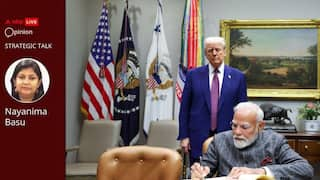Lowest EPF Rate In 43 Years, But Govt Says Returns Getting Higher Than Retail Inflation Rate
EPF Rate Update: Finance Minister Nirmala Sitharaman said in the Rajya Sabha that the rate was dictated by today's realities where interest rate on other small saving instruments was even lower.

EPF Rate Cut: For 2021-22, the Central Board of Trustees has decided to reduce the EPF rate to 8.1 percent, which is the lowest EPF rate in 43 years. From trade unions to political parties, there has been a strong opposition to the decision to reduce the EPF rate.
Defending the EPF rate cut, Finance Minister Nirmala Sitharaman said in the Rajya Sabha that the rate was dictated by today's realities where interest rate on other small saving instruments was even lower.
She said the decision to lower interest rate was taken by the central board of the provident fund managing body, EPFO, which has representatives of all stakeholders, including employee unions.
Govt Defends EPF Rate Cut
The Labour Ministry has released a factsheet to buttress the decision to cut the EPF rate, stating that the interest on EPF was the highest as compared to any investment scheme and was twice the saving rate of the post office.
READ | EPFO Interest Rate Better Than Other Schemes, Reflects Today's Realities, Says Nirmala Sitharaman
Interest On EPF More Than Inflation Tate
According to the Labour Ministry, the retail inflation rate (CPI) in 2012-13 and 2013-14 was higher than the EPF rate. In 2012-13, the retail inflation rate was 9.90 percent, which was getting 8.50 percent interest on EPF.
In 2013-14, the retail inflation rate was 9.40 percent while the interest on EPF was 8.75 percent. This meant that investors were getting negative returns on EPF. The Labour Ministry said that the real rate of interest on EPF since 2014-15 was positive as the interest rate on EPF had been higher than the retail inflation rate that has benefited the consumers.
According to the Labour Ministry's factsheet, the EPF rate for 2021-22 has been reduced from 8.5 percent to 8.1 percent. In 2021-22, retail inflation has come down from 6.2 percent to 5.2 percent between April and December in 2021-22.
This factsheet compares the interest rates of different investment schemes. It has been reported that EPF has more returns than the rest of the schemes which is as follows:
Employee Provident Fund (EPF)-8.1%
Sukanya Samriddhi Yojana (SSY)-7.6%
Senior Citizen Savings Scheme (SCSS)-7.4%
PPF -7.1%
Kisan Vikas Patra (KVP)-6.9%
National Saving Certificate (NSC)-6.8%
SBI FD - 6.7%
Post Office Saving Account (POSB)-4%
A Big Way To Save EPF Investment
However, it is also true that for 60 million people, EPF is the biggest source of investment savings that comes in handy in their old age. This is an important scheme from the point of view of social security.
The argument is being made to reduce the retail inflation rate, but the way the prices of petrol, diesel, cooking gas are increasing, due to which other things are also getting expensive, obviously it will have an impact on the pockets of those investing in EPF.





































